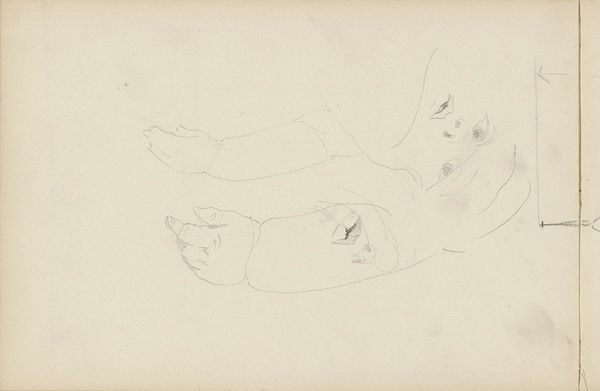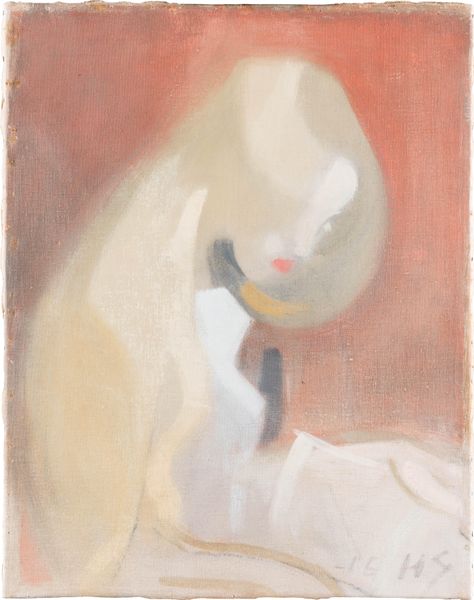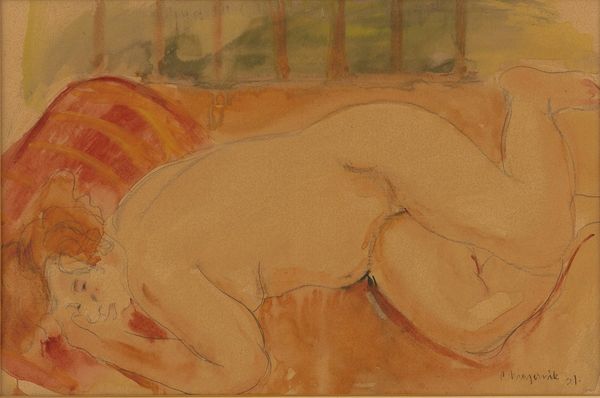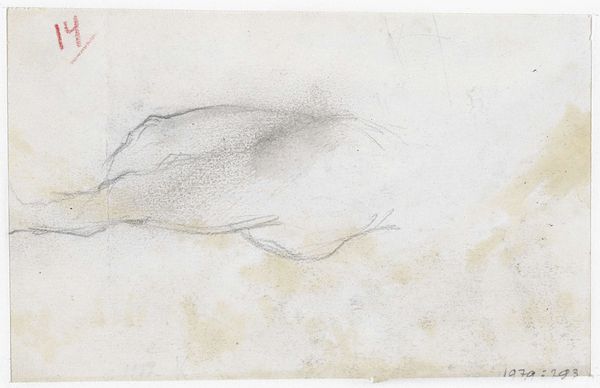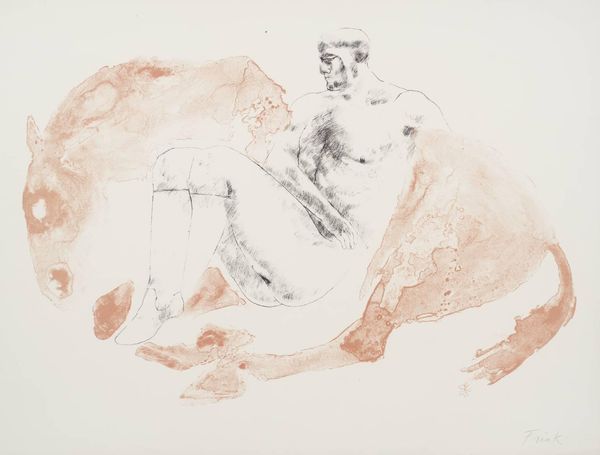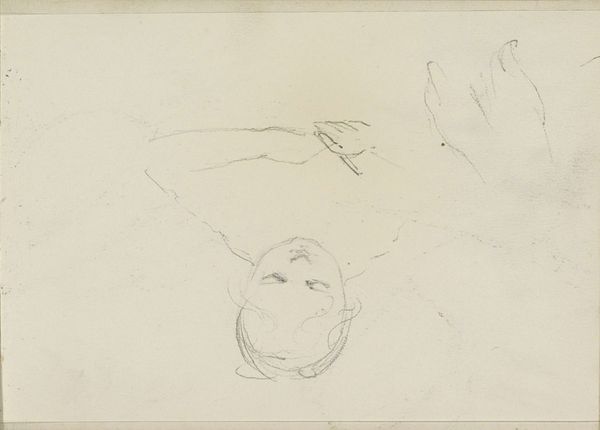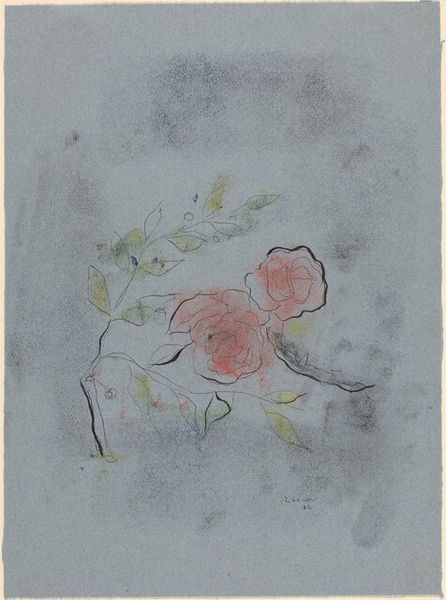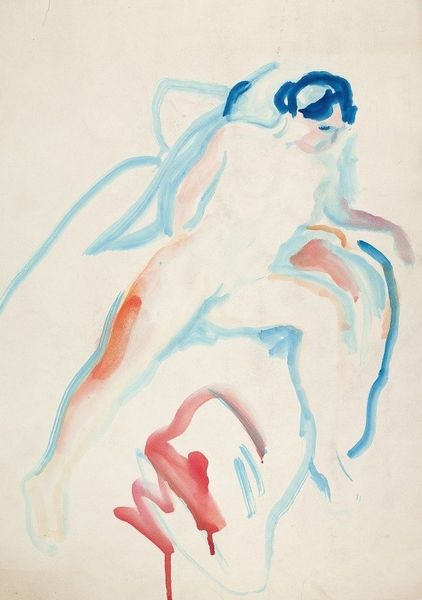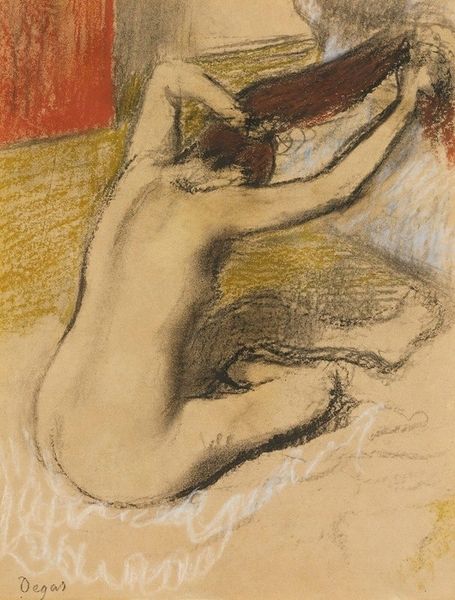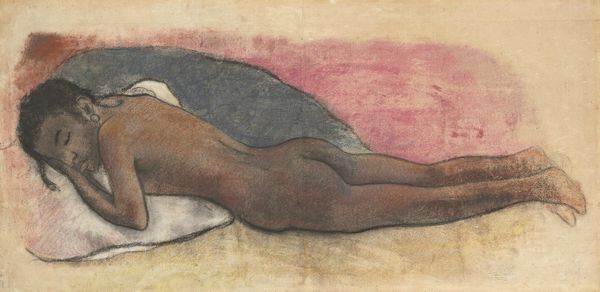
painting, oil-paint
#
portrait
#
painting
#
oil-paint
#
figuration
#
intimism
#
modernism
#
watercolor
Copyright: Public domain China
Curator: Welcome. Before us we have "White Pekinese," an oil-on-canvas painting by Sanyu, dating to 1931. Note the delicate handling of paint and the restricted palette. Editor: It looks like it's floating in cream! A quiet, almost melancholy creature… a study in gentle repose. Curator: Indeed. Observe how Sanyu utilizes simplification to reduce the animal to its essential forms. The eyes, merely three black circles, provide the focal point, sharply contrasting with the otherwise muted pink and white tones. Editor: They give the dog such a comical yet oddly penetrating stare. Is it judgement? Pleading? A mix of both perhaps? There's an incredible tension between the sparseness of the brushwork and the emotional complexity it evokes. The crackled paint only amplifies that sense of wistfulness...like faded memory. Curator: The textural qualities, though subtle, play a significant role in our reading of the painting. Sanyu manipulates the negative space surrounding the Pekinese. See how it is rendered almost indistinguishable from the figure, which underscores a kind of isolation? Editor: Or maybe not isolation, more a blurring of boundaries? The dog and its surrounding… it feels integrated within its world, like a sigh absorbed by the air. This work seems more about feeling than seeing. Curator: That tension, between subjective emotional interpretation and formal composition, is part of what makes Sanyu's work so compelling. Its modernity emerges from precisely this combination of painterly intimacy and sparse geometric rendering. Editor: It's like Sanyu understood the soul of the animal... distilled into its simplest expression. So affecting. It encourages us to find beauty and profound feeling within even the most apparently understated image. Curator: A beautiful painting and, I suggest, a superb encapsulation of the Modernist idiom. Editor: Absolutely. It really lingers in the mind, doesn't it?
Comments
No comments
Be the first to comment and join the conversation on the ultimate creative platform.
